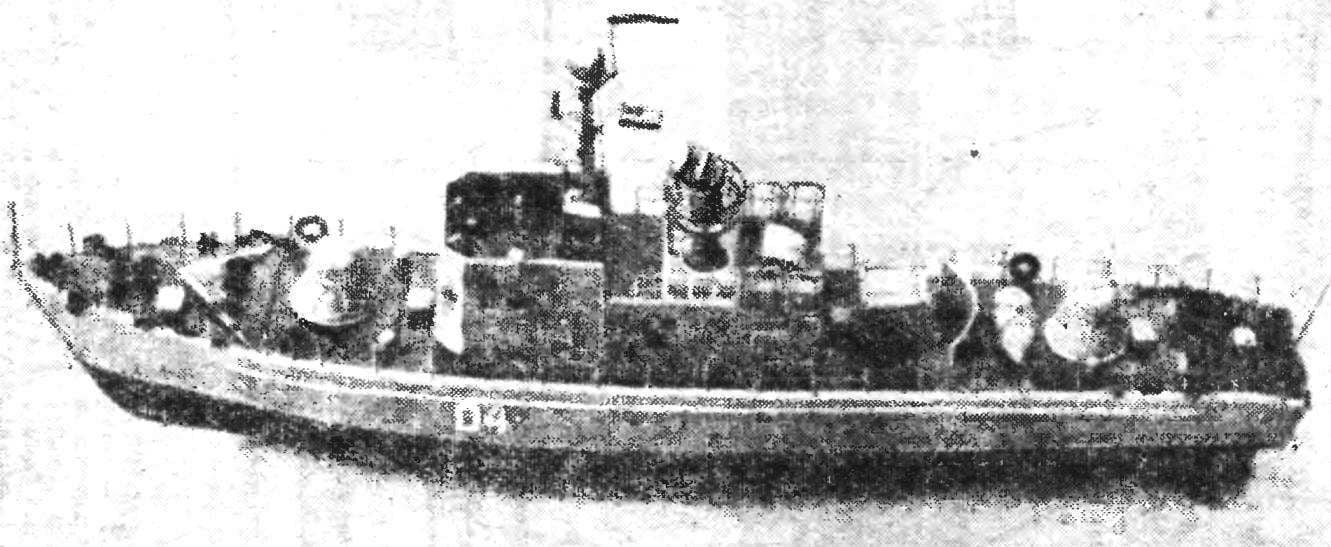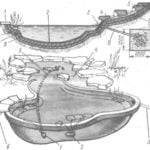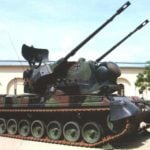 This model is designed for pupils of 4-5 classes involved in a circle of the second year. At the regional competitions 1974 Sergei Lebedev, speaking with a model with the same contours and dimensions, took first place.
This model is designed for pupils of 4-5 classes involved in a circle of the second year. At the regional competitions 1974 Sergei Lebedev, speaking with a model with the same contours and dimensions, took first place.
The boat of a specific prototype has not. In its construction were used materials from different sources.
BODY. The deck is cut from plywood with a thickness of 1 mm, using the sticks, determining its deflection, fix the stacker Board. A set of case frames, of for – post, the keel plank and glue the transom to the deck. Between the frames around their perimeter glue plates of Styrofoam with a thickness of 7 to 15 mm depending on the curvature of the plot (PVA glue, AGO, casein, or any other, does not contain acetone). After drying, the adhesive foam must be processed before frames with a sharp knife and then sandpaper with a large grain, mounted on the bar length 25-80 cm Then coat the hull with epoxy glue and thin fiberglass. Instead of pasting the model, you can use cheesecloth (2-3 layers) on glue PVA.
Thick epoxy filler (resin plus hardener, plus talc) smooth a thin layer with a wide rubber spatula cover the body, filling in all irregularities. Sand the paper. Zashpaklyuyte nitroshpaklevok, after drying, sand and paint nitro. Finishing the coloring from the spray gun after doing the installation of Davudov, the keel with two rudders and stickers the waterline.



Patrol boat:
1, 39 and anchor lights, 2 — gaystock, 3 — rail (installed at the perimeter of the body), 4 — anchor Proclus, 5 — screw stopper, 6 — spike, 7 — balneoclinic, 8 — view, 9 — turret, 10 — air fungus, 11, 50 — manhole covers, 12, 16 — antenna, 13 — glazing of the bridge, 14 — a distinctive fire (right — green, left — red), 15 — commander’s bridge, 17—spotlight 18 — antenna direction finder, 19 — masthead light, 20 navigation radar, 21 locator circular review, 22 — kotikovye signal fire, 23 — flagship fire, 24 mast 25 — file Hafele, 26 — a fire extinguisher, 27 — magnetic compass, 28 locator control artillery fire, 29 — upper Wake fire 30, the intake 31 is a container with a rescue raft, a 32 — fan 33 — reactive mortars, 34 — Fido, 35 — bollard, 36 — bale strap, 37 — flume release gear, 38 — the flagpole, the 40 — lower Wakefield fire 41 — fire hamborsky, 42 — towing bollard, 43 — buoy 44 — yard of the mast 45 is the device of fire control 46 steering wheel 47 — a portable radar screen, 48 — repeater gyrocompass, 49 — Telegraph machine, 51 — Fairlead anchor chain, 52 — anchor Hall.
The size of the hatch depends on the type of engine. If you apply the electric motor and small battery, enough of the hatch under the main superstructure, edged with coamings of a height of 4 to 5 mm When resinator Luke need to penetrate about an eighth of the frame where a reduction gear is.
The MAIN SUPERSTRUCTURE is made of thin plywood, treated with sandpaper to 0.5— 0.7 mm, at the corners glued slats 2X2 mm. add-on several times covered with Amalita, polished and painted with nitro.
Doors, peepholes, portholes, air vents and other parts are made separately and glued on fully prepared and painted surface.
Turrets (upper and lower part separately) stamped out of plexiglass with a thickness of 1-1,5 mm and glued with dichloroethane. Handrails and ledges of copper wire; glued after the first painting. Shafts are made of steel or brass wire fused using a soldering iron.
JET sticky bomb launcher is the most complex part of the model; assembled from tubes, thumb NT aluminum foil on the shank of the drill (Ø2. 8-2,9 mm. the Base and stand is made of Plexiglas with a thickness of 1-1,5 mm. Notched vertical clamp cut from a clock gear. Thrust, ignition devices and storm stopper — copper or brass wire. Trunks pasted on strips of celluloid by nitrocream. Glue and paint into the joints of pipe that connects all parts firmly.
The RADAR’s ANTENNA to control artillery fire. A cylindrical portion is curved from a heated Plexiglas with a thickness of 1 mm on the mandrel spherical bottoms cut from a ball for ping-pong table, stand and base are machined on a lathe.
Rail rack and ladder (wire) fused with a soldering iron.
The MAST is curved on a mandrel of brass or copper foil. Pad cut from a foil or thin sheet metal, flanged for 1-1,5 mm or banded with copper wire. All small parts are soldered.
DINGHY carved from Linden or stamped out of plexiglass with a thickness of 1-1,5 mm.
Release gear are bent from brass foil, fencing welded wire. Depth charge turned on the machine or rolled from aluminum foil, the side walls carved by cutting and pasted.
All the little details, right down to the truck and gun barrels manufactured by injection molding from polystyrene (nylon or polyethylene poorly glued and “not hold” the paint). The technology of manufacturing of other parts were repeatedly described in the journal “modelist-Konstruktor” and brochures SSC DOSAAF.
ENGINE. If you have a battery pack SCS-1,5, or improvised weighing not more than 200 — 250 g and a voltage of 8 To -9, you can set two motor Assembly dadude and screws (they are on sale) or a “Gnome” with the reduction gear of 1.5:1 on the two screws.
“The power plant” will provide the desired scale speed — the passage of a 10-meter distance for 7.5—8 C. Capacity of improvised batteries (acid) may be small, because during the competitions engines are no more than 2 min (4-goal run and 10 training). Apply battery 3336L does not make sense: they do not provide the desired amperage, heavy and bulky.
Two rubber motor for 25 threads with a step-up gearbox 1:2 and well-chosen with screws Ø 20-22 mm will also ensure quick passage of the 10-meter distance, but they require more time for speed adjustment. For drawing resinator when charging in the transom make two holes Ø 15 mm, turn over their dural plate 2 mm thick with a square hole 15X15 mm. Then soldered hooks resinator brass cubes 14x14X1,5 will secure wound motors.
PAINTING THE MODEL. Superstructure and above-water part of the hull light grey the deck is dark grey, waterline (width 1.5—2 mm) white, antenna, mooring devices, anchor and underwater part of the hull black.
All the parts above the waterline have to do as easy as possible, otherwise at the slightest wave model at distance “shake”. If it will not turn over, stability of course will lose for sure.
P. KUZNETSOV, Vladimir



